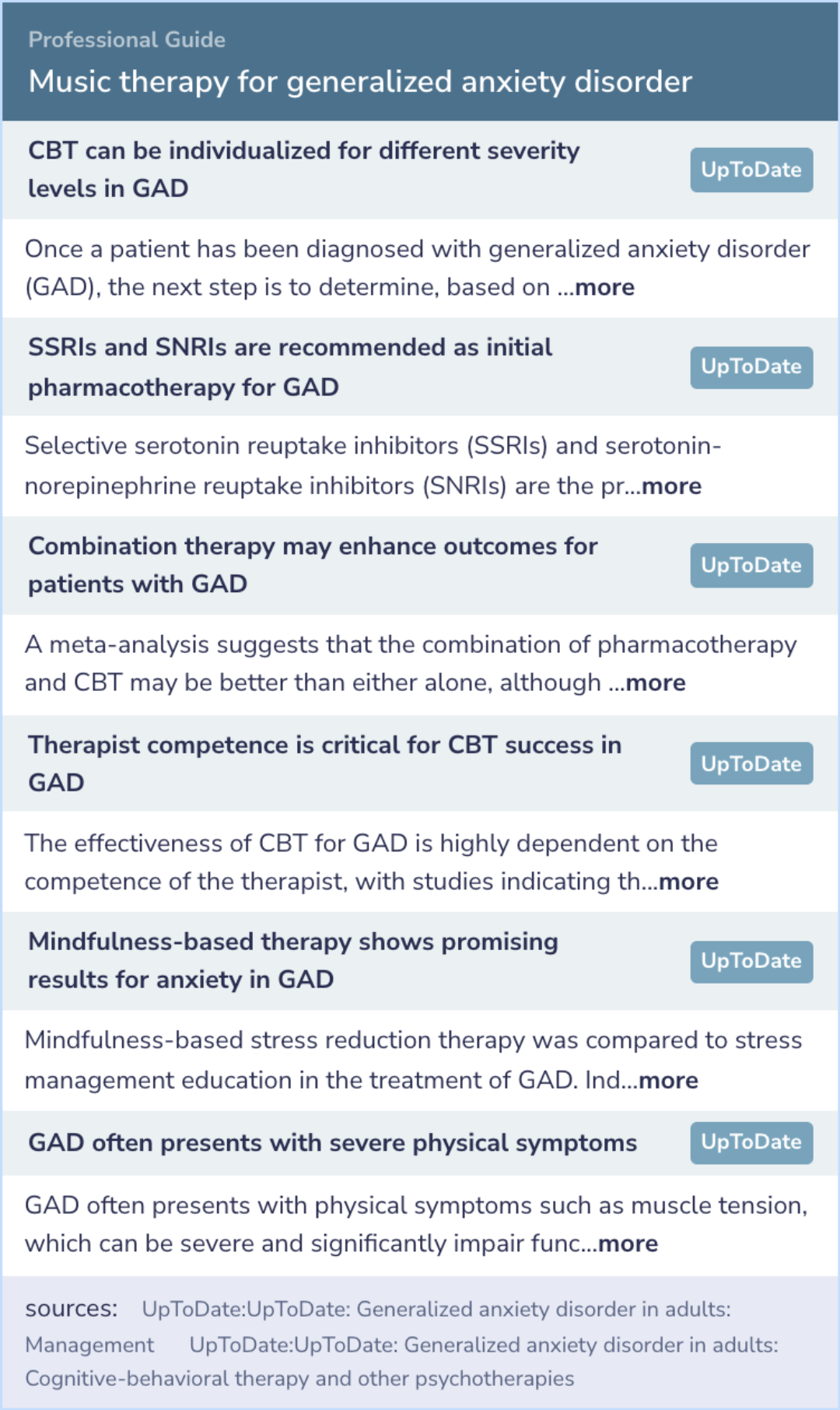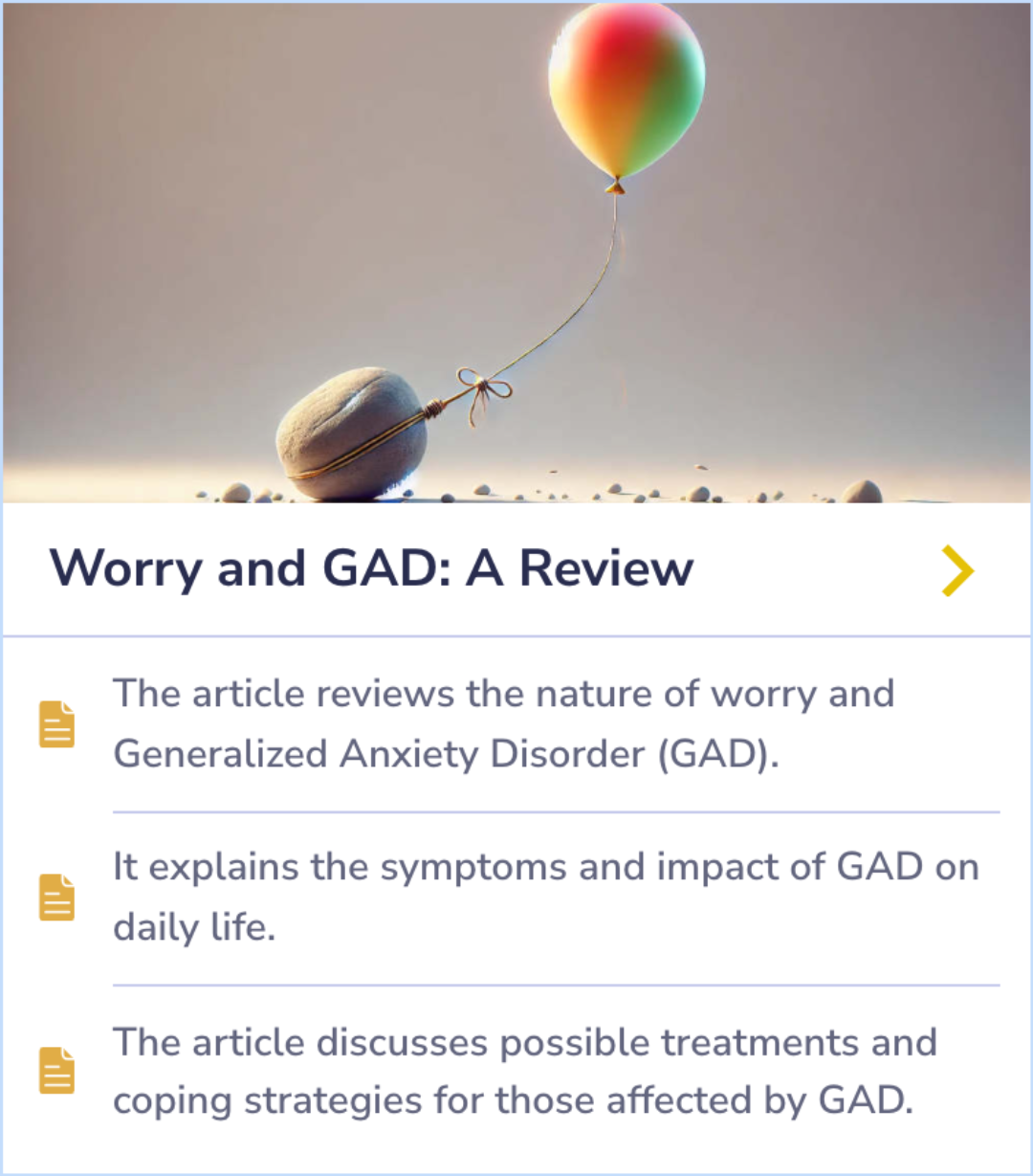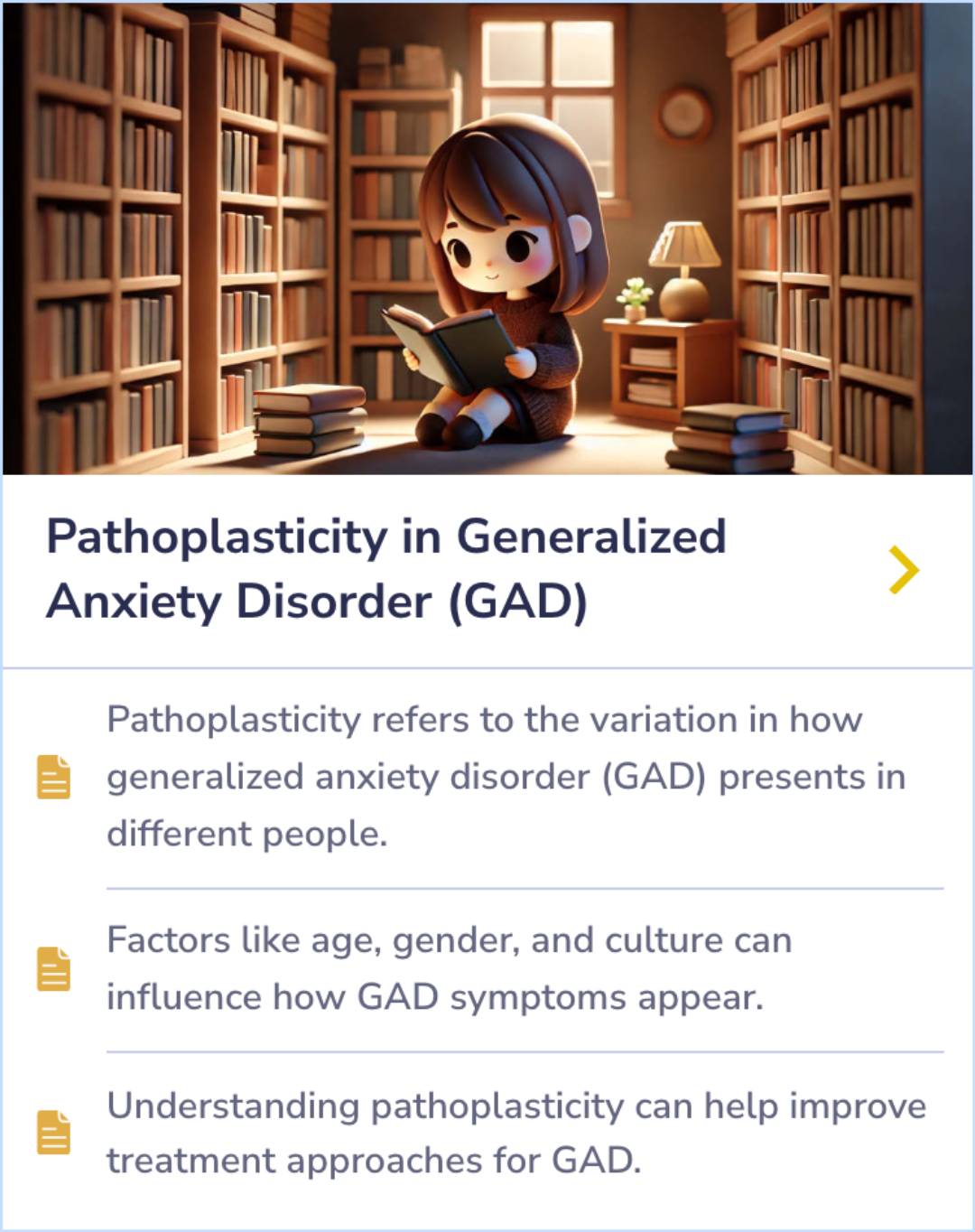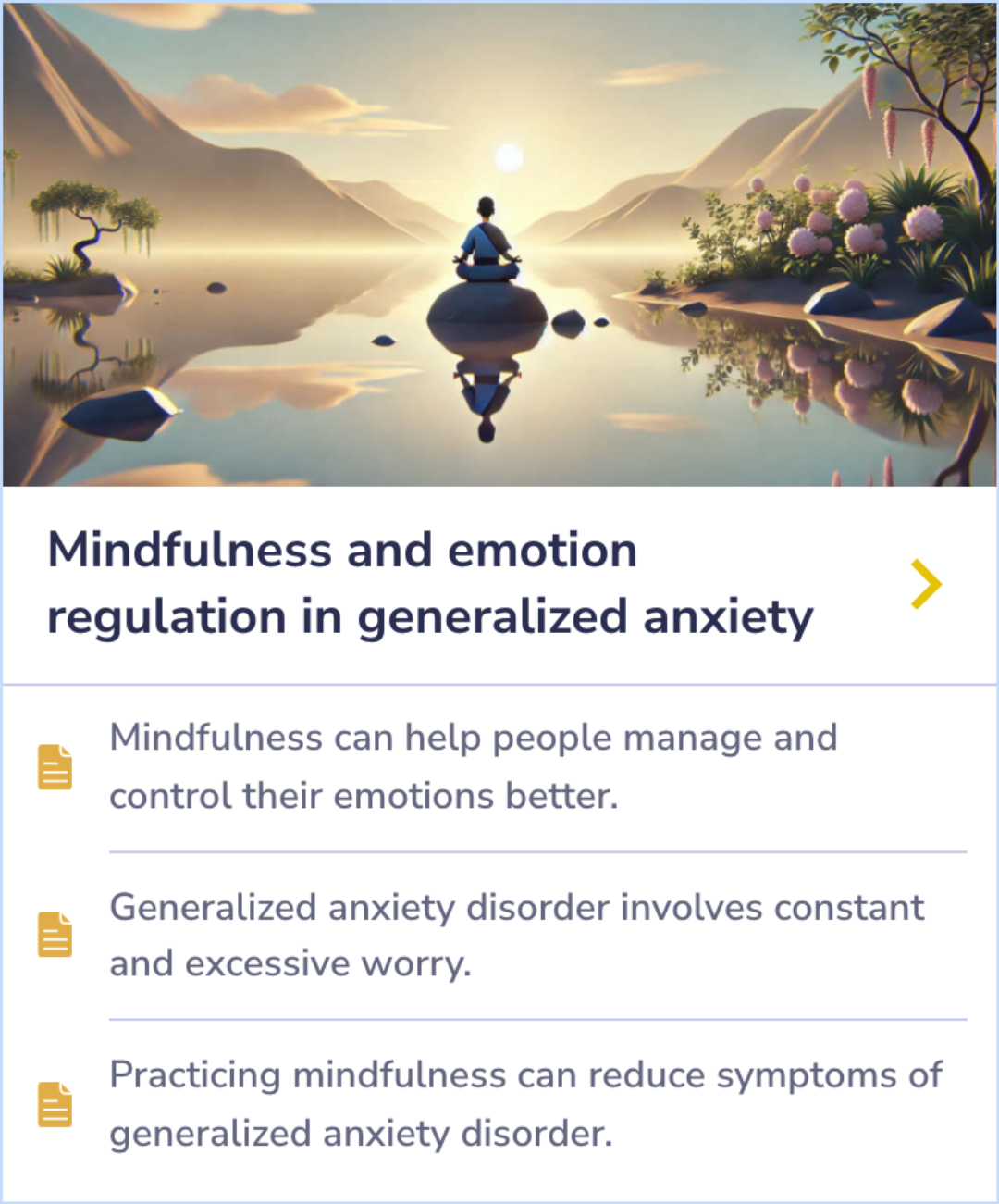Generalized Anxiety Disorder Papers
Visual Abstract
Music therapy in generalized anxiety disorder
Music therapy for generalized anxiety disorder
November 3, 2024
author
Gutiérrez, E. O. F., Camarena, V. A. T.
journal
The Arts in Psychotherapy
Date Published
2015
Why link to a visual abstract?
What is a visual abstract?
Original
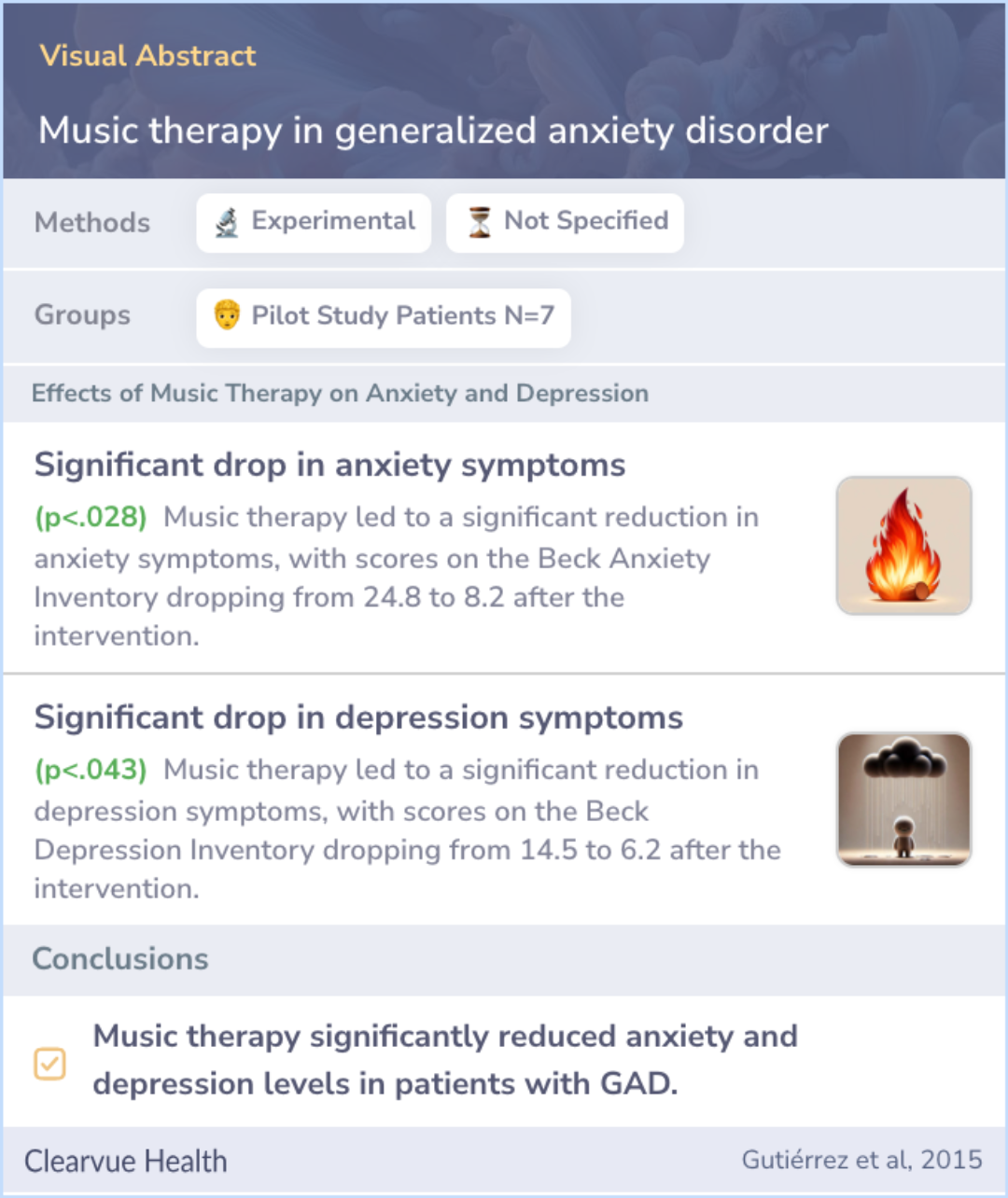
Study Summary
🔬
What They Studied
The researchers studied the effects of music therapy on patients with generalized anxiety disorder (GAD) to see if it could reduce symptoms.
💡
What They Found
The study found that music therapy significantly reduced anxiety (GAD) and depression (MDD) levels in patients with generalized anxiety disorder (GAD).
📚
What This Means
The findings suggest that music therapy can effectively lower anxiety (GAD) and depression (MDD) symptoms in generalized anxiety disorder (GAD) patients, complementing traditional treatment approaches and aligning with current therapy guidelines.
Study Summary
Study Overview
This study explored how music therapy (MT) can help people with anxiety (generalized anxiety disorder, GAD) by tapping into their memories and emotions. Participants engaged in exercises that encouraged emotional expression, which is thought to help change negative thoughts. By sharing their experiences, many patients found that the therapy helped them feel more secure and improved their self-esteem.
The findings suggest that MT may lead to a better way of handling anxiety, making it a potentially useful option for those struggling with this issue.
The findings suggest that MT may lead to a better way of handling anxiety, making it a potentially useful option for those struggling with this issue.
Abstract: background
This study proposes music therapy as a novel approach in clinical psychiatry for generalized anxiety disorder (GAD), which is one of the most common and incapacitating mental disorders.

Cognitive Changes
"Understanding that music enhances the exploration of memories associated with problems related to life history, we used passive MT passive exercises to encourage and promote the expression of memories and emotions as processing these memories and emotions in the resolution step can facilitate cognitive changes and modify the irrational thoughts and beliefs."
Empathy and Self-Esteem
"As a result of the MT program, during their final verbal processing, patients recognized that the psychotherapeutic process helped them to develop empathy, security, self-esteem and alternative tools to use in situations of anxiety or stress, thus allowing them to assertively manage conflict."
Reduced Anxiety
"This, in turn, may well lead to reduced levels of anxiety."
Study Summary
Methods
The researchers conducted a preliminary trial with patients already under medical supervision and taking prescribed medication. They introduced music therapy in a structured format to see if it could reduce symptoms.
Seven patients with no other mental health conditions participated, diagnosed using DSM-IV standards. The intervention included twelve 2-hour sessions, assessed with anxiety (GAD) and depression (major depressive disorder, MDD) inventories before and after the therapy.
Seven patients with no other mental health conditions participated, diagnosed using DSM-IV standards. The intervention included twelve 2-hour sessions, assessed with anxiety (GAD) and depression (major depressive disorder, MDD) inventories before and after the therapy.
Abstract: methods
In this study, we present the results of a pilot intervention with patients under clinical control and receiving pharmacotherapy. Music therapy was used to decrease the symptomatology of this disorder following a structured protocol. The pilot study ...more

Study Summary
Results
The study found significant reductions in anxiety (GAD) and depression (MDD) levels among participants following the therapy, indicating that music therapy had a positive impact.
These promising results suggest that music can be a valuable tool in managing symptoms of generalized anxiety disorder (GAD), though further research is needed to validate these findings beyond this small group of participants.
These promising results suggest that music can be a valuable tool in managing symptoms of generalized anxiety disorder (GAD), though further research is needed to validate these findings beyond this small group of participants.
Abstract: results
The Wilcoxon statistical test for related groups in global scores demonstrated a significant reduction after the intervention. The results demonstrate that music therapy was effective in reducing anxiety and depression levels in GAD patients. Additio...more
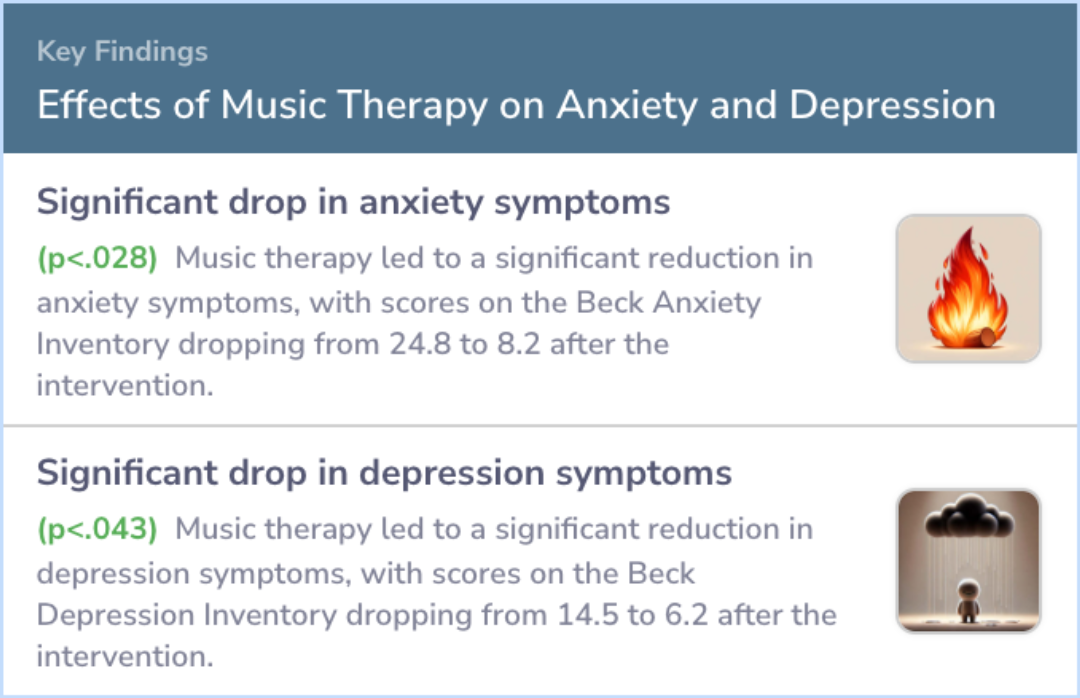
Study Summary
Conclusions
The initial results contribute valuable insights into the potential benefits of music therapy for individuals with generalized anxiety disorder.
Further investigations could help solidify its role as a complementary therapy, potentially reshaping traditional treatment frameworks and offering patients more holistic care options.
Further investigations could help solidify its role as a complementary therapy, potentially reshaping traditional treatment frameworks and offering patients more holistic care options.
Abstract: conclusions
(PsycINFO Database Record (c) 2016 APA, all rights reserved)
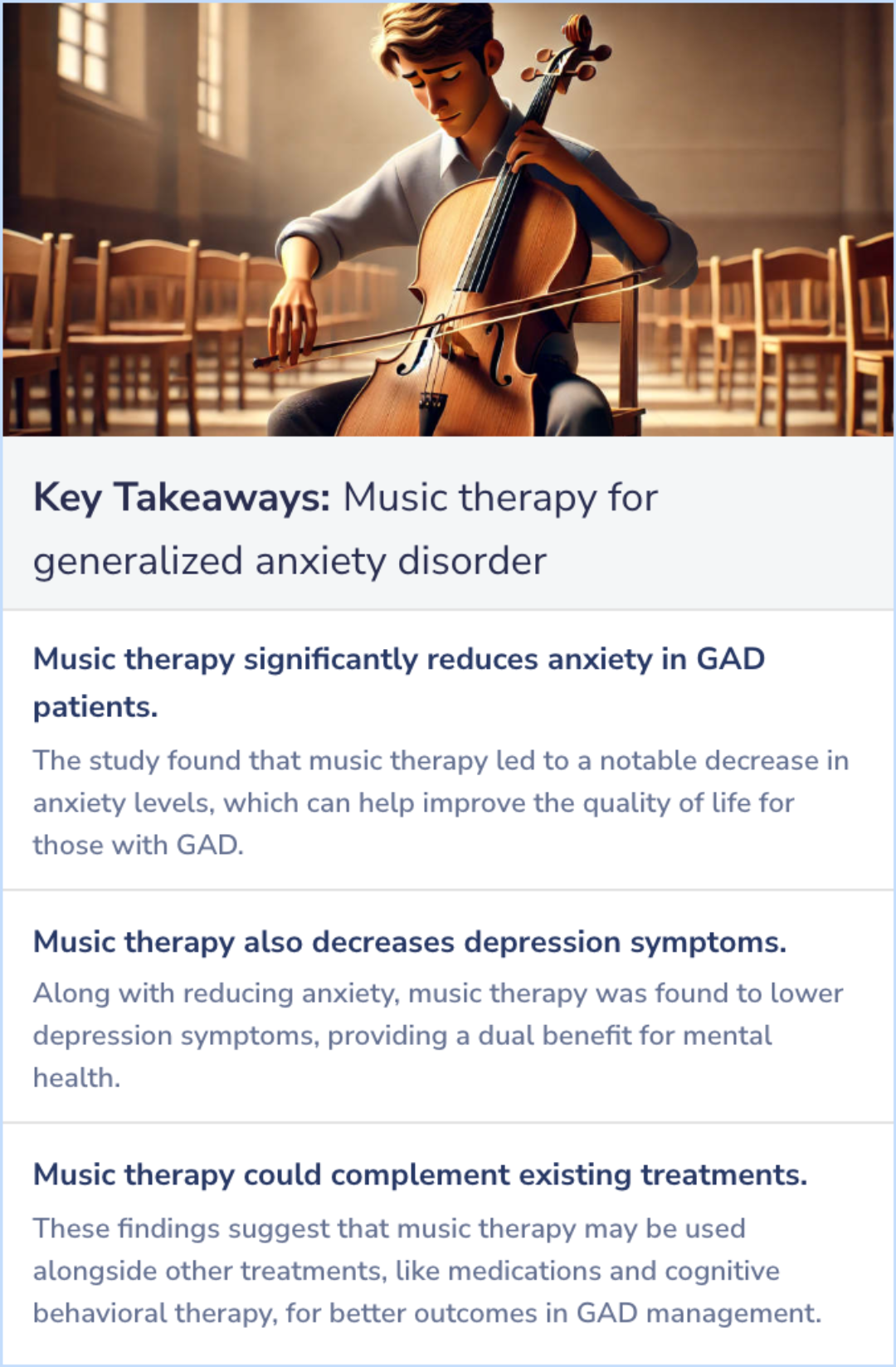
Background Information
Patient Guide
🎵
Music Therapy's Role in Mental Health
Current evidence supports music therapy as a complementary intervention for mental health disorders, including anxiety.
💊
Common Interventions for GAD
CBT and medications like SSRIs and SNRIs are standard treatments for managing generalized anxiety disorder.
🤕
Physical Symptoms of GAD
Patients with generalized anxiety disorder often experience fatigue, muscle tension, and trouble sleeping.
🔗
Challenges in GAD Treatment
GAD treatment is complicated by high rates of comorbidity and potential side effects from medications.
🔄
Chronic Nature of GAD
Generalized anxiety disorder is often a long-term condition with possible relapses, even during treatment.
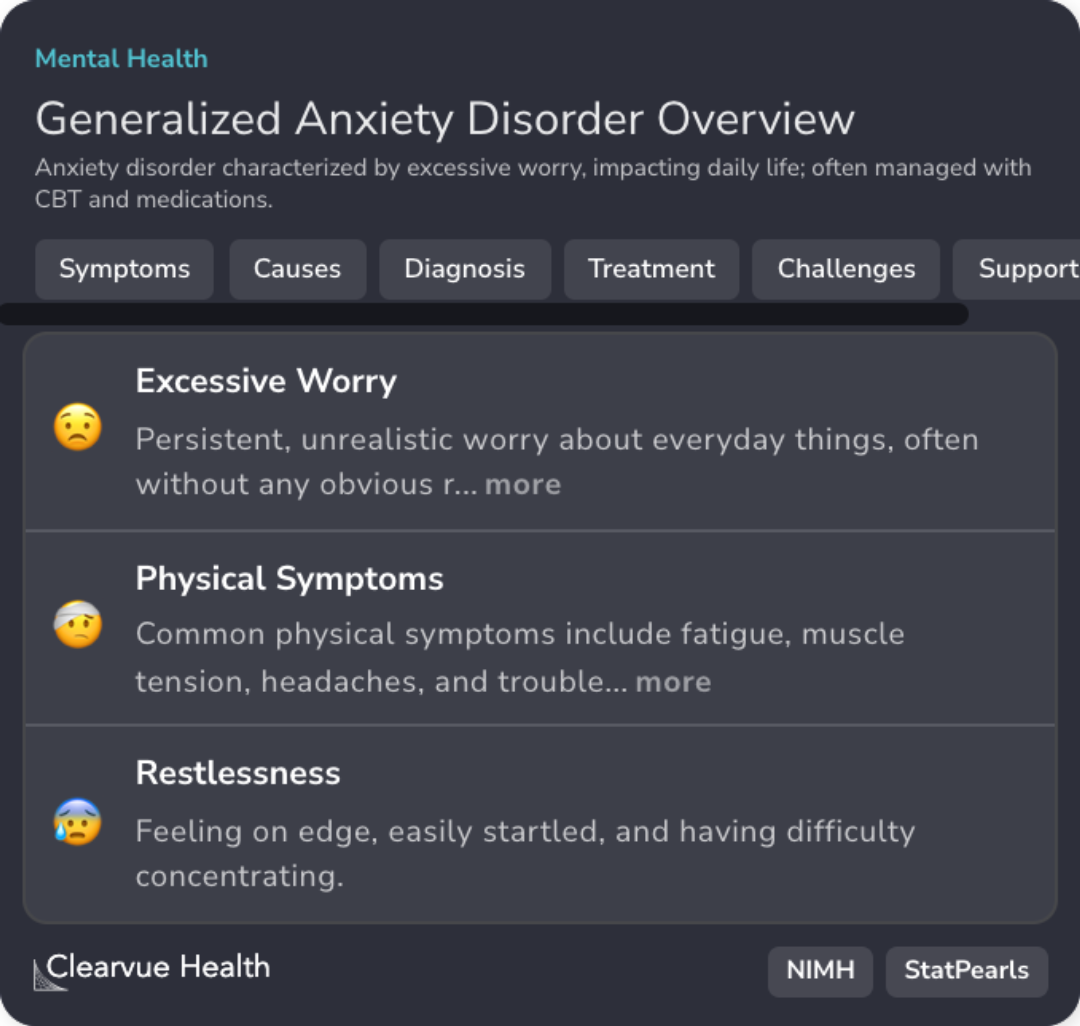
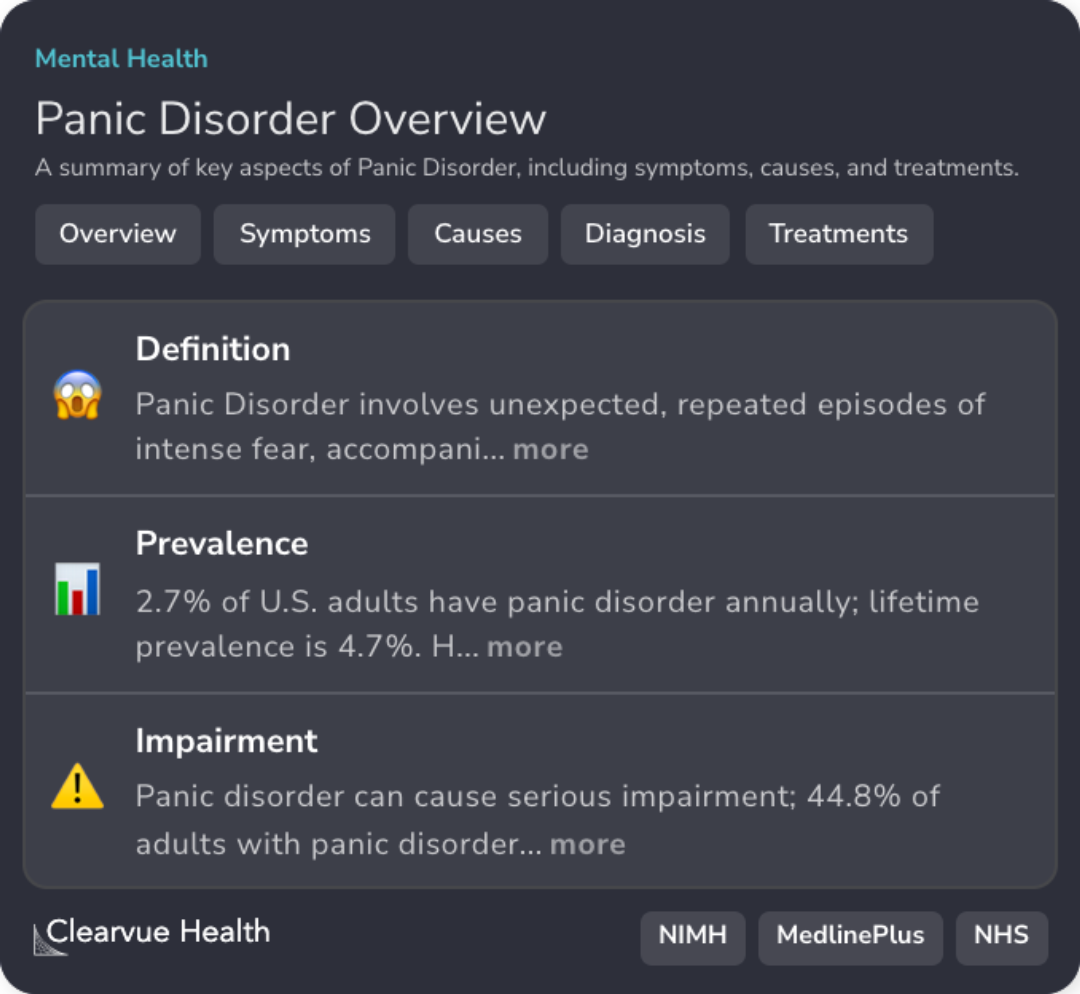
Professional Guide
Expert Opinion: Music therapy for generalized anxiety disorder
In line with the study's exploration of music therapy, selective serotonin reuptake inhibitors (SSRIs) and serotonin-norepinephrine reuptake inhibitors (SNRIs) emerge as the favored initial pharmacotherapy options.
Combining pharmacotherapy and cognitive-behavioral therapy (CBT) can enhance treatment success for generalized anxiety disorder (GAD).
Therapist competence greatly influences cognitive-behavioral therapy (CBT) outcomes, highlighting that therapist training and supervision are important considerations.
Combining pharmacotherapy and cognitive-behavioral therapy (CBT) can enhance treatment success for generalized anxiety disorder (GAD).
Therapist competence greatly influences cognitive-behavioral therapy (CBT) outcomes, highlighting that therapist training and supervision are important considerations.
Evidence Summary
Managing Anxiety: Understanding GAD Symptoms and Treatments
Generalized Anxiety Disorder (GAD) is marked by persistent worry and anxiety, affecting daily life through constant unease and stress. Those with GAD may experience symptoms like restlessness, difficulty concentrating, and physical discomfort.
Various treatments and coping strategies, including therapy and lifestyle changes, can help manage these symptoms and improve quality of life for those affected by GAD.
Various treatments and coping strategies, including therapy and lifestyle changes, can help manage these symptoms and improve quality of life for those affected by GAD.
Evidence Summary
How Personal Factors Shape GAD Symptoms
Pathoplasticity in generalized anxiety disorder (GAD) highlights how symptoms vary across individuals. Factors like age, gender, and cultural background shape how GAD manifests, influencing each person’s experience with anxiety.
These differences mean that symptoms may look unique from one person to the next, underscoring the role of personal factors in GAD presentation. This perspective supports more tailored approaches for treating anxiety effectively.
These differences mean that symptoms may look unique from one person to the next, underscoring the role of personal factors in GAD presentation. This perspective supports more tailored approaches for treating anxiety effectively.
Evidence Summary
Mindfulness: Easing Anxiety Through Emotional Control
Mindfulness can help people with generalized anxiety disorder manage their emotions and lessen constant worry. Regular practice of mindfulness techniques has shown potential to reduce symptoms associated with excessive anxiety.
Individuals with generalized anxiety disorder experience persistent, excessive worry. By focusing on the present, mindfulness provides tools for emotional regulation, potentially easing the impact of these worries.
Individuals with generalized anxiety disorder experience persistent, excessive worry. By focusing on the present, mindfulness provides tools for emotional regulation, potentially easing the impact of these worries.
